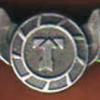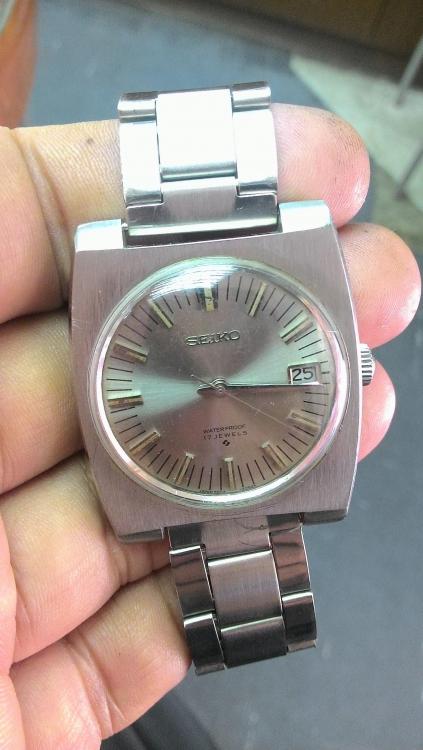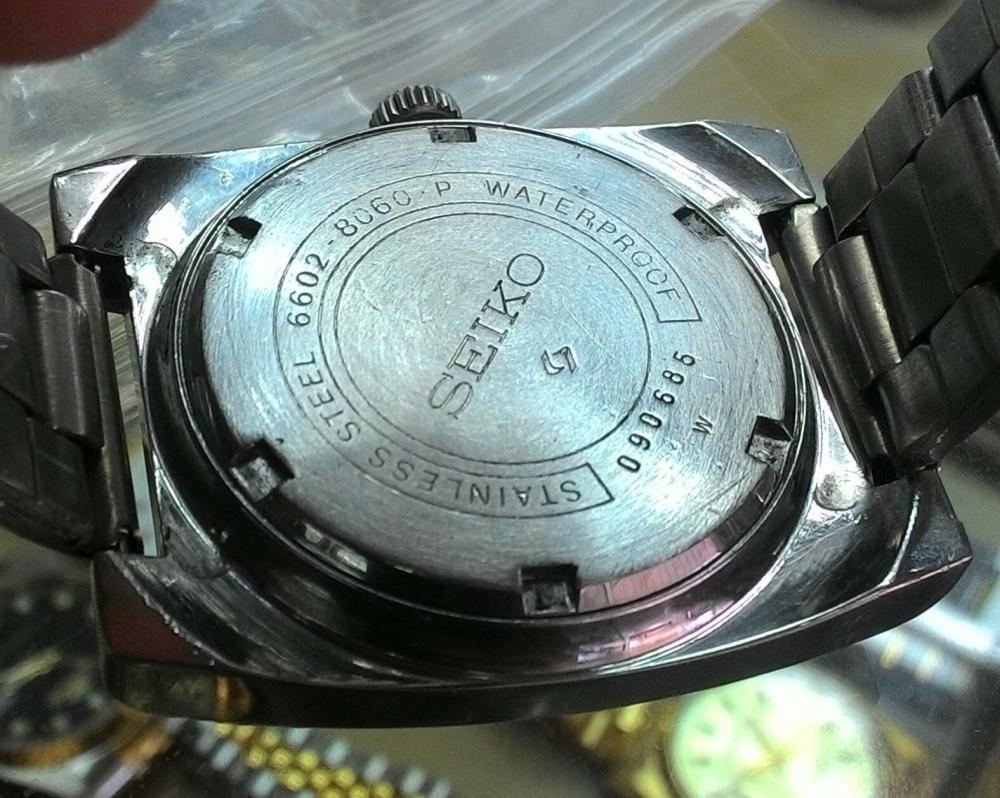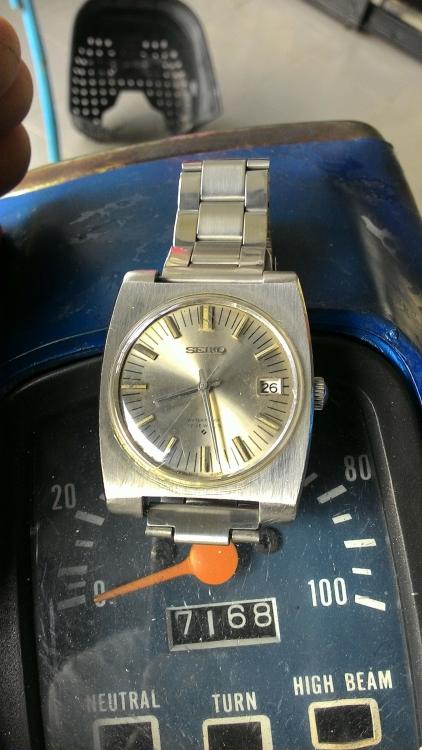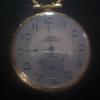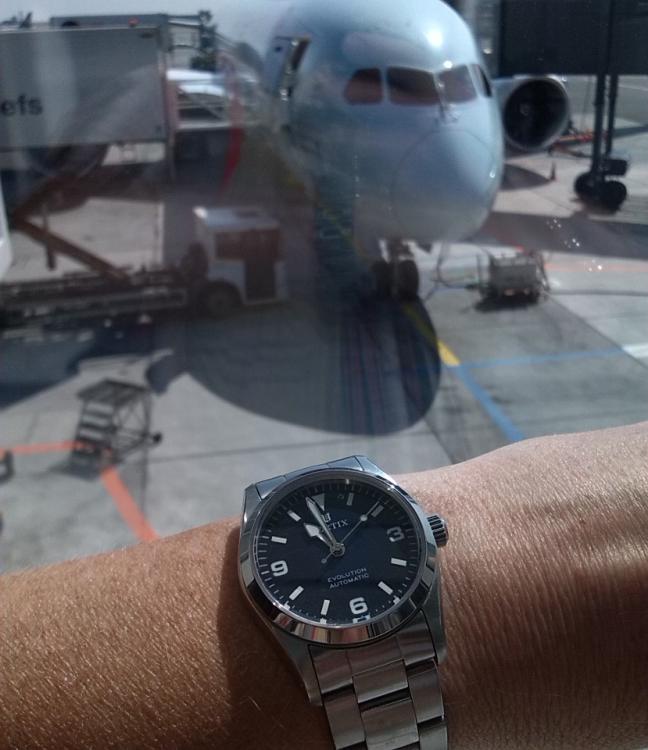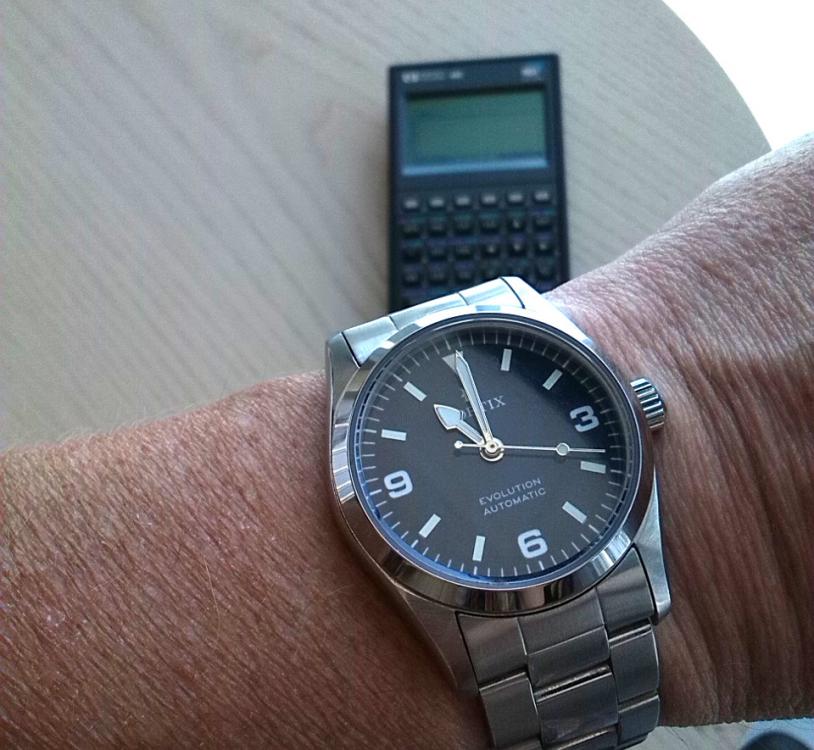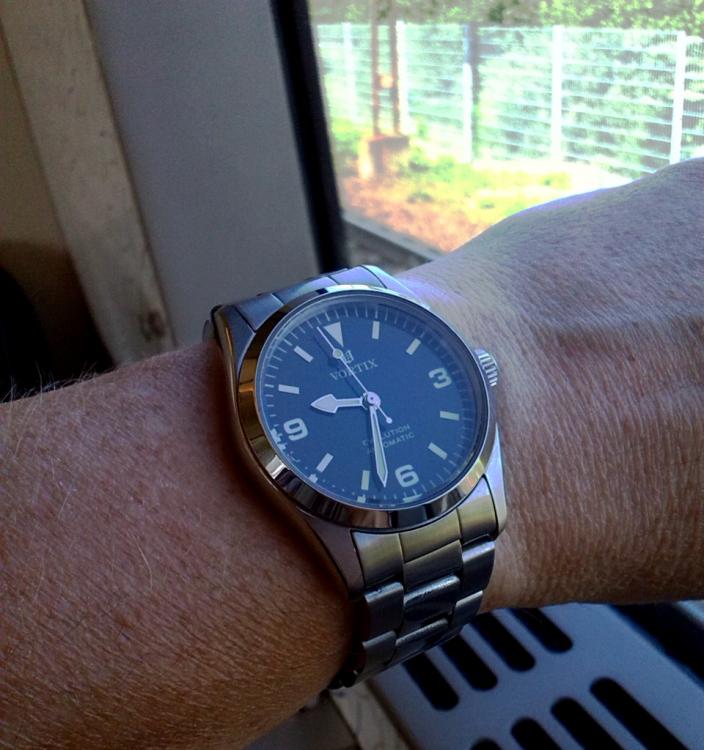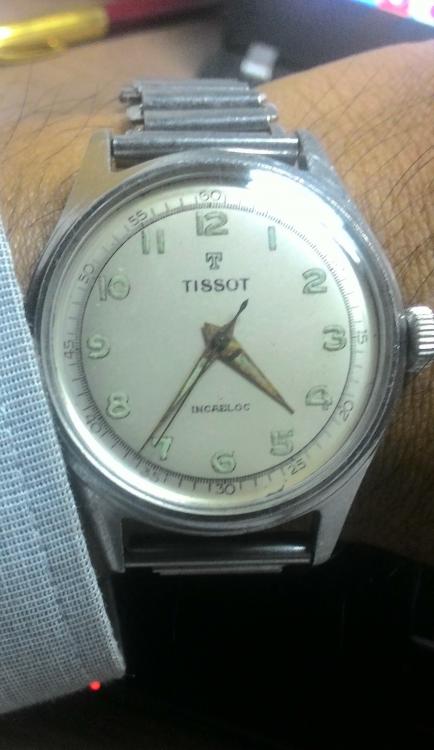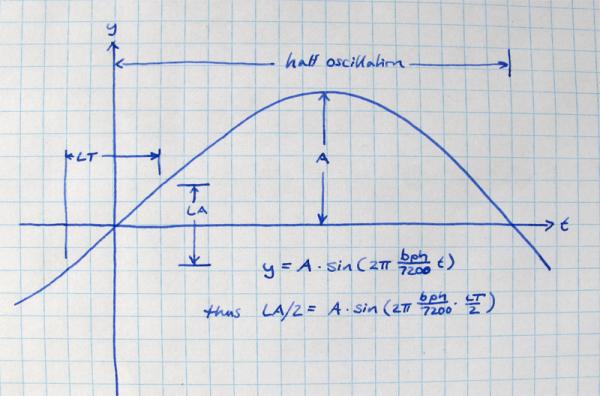Leaderboard
Popular Content
Showing content with the highest reputation on 06/27/16 in all areas
-
Wearing my latest aquisition.. A Seiko 6602-8060 hand-wind. Pretty good condition considering its 46 years old. Dial is good, ditto the hands. Case back still has the circular graining / machining marks. Strap is aftermarket. Watch seems to run fine now so no plans to service it any time soon. These 6602 movements are really nice and capable of excellent timekeeping! Anil3 points
-
The c-shaped spring has a tab in the middle which is caught under a lip/groove. Use a sharp tool and move the tab out of its groove. You don't need to lift because the spring s slightly bowed when installed and will spring up. The two ’legs' will ride down in the groove, bending slightly to match the radius of the groove. To install, fit the two legs in the groove, it should go in the grooves easily, then put the cap jewel in place. Next, slide the spring so the tab in the middle clears the lip of the groove, then use another tool to press down on the tab while pushing the spring under the groove . Like anything else in watch repair, it gets easier with practise but I prefer working on these than the ones on the 7s36 models. Oh, I would start by working with the movement inside a plastic bag!! Anil1 point
-
Source references are important. I love pictures, but just enough to illustrate the point. Otherwise they get in the way. Make your case with the facts, then when you are done, feel free to state your own view. Don't present your conclusion as fact, but just where you think the facts lead. Then, get ready to be flamed Have fun!1 point
-
Get two very small diameter nails and hammer them very closely together into a block of wood leaving about three millimetres sticking out. Place the second hand face down between them. Now starting at the tip end of the hand between the nails, gently push or pull the hand to ease out the bends slowly working your way to the centre tube.1 point
-
The clock seems to have German style dial much the same found on 400 day clocks. The hands are just plain wrong & is it really mahogany.1 point
-
There you have it jdrichard with Kraai's help in posting that wonderful site it's all there for you.1 point
-
1 point
-
Great start... I like the pallet adjusted lathe chair!!! shows your creativity...nice bench too, you've got a lot more room than I do. ( I am jealous).. hope all is well with you (floods in WVa). Vote = No carpet!1 point
-
Been wearing this since I got it. It looks to have settled down as it seems to be keeping exact time to my satellite receiver's display.1 point
-
I serviced this watch a long time ago, but it needed a new case and then I had trouble with the movement rattling in the case. I just got around to finishing it last week. Now I can wear it! Sent from my XT1064 using Tapatalk1 point
-
1 point
-
1 point
-
1 point
-
1 point
-
Today, it's a Bulova Accutron. I got this a few weeks ago, and it runs like new......well, it's about -2 seconds a day. Sent from my XT1585 using Tapatalk1 point
-
Thanks. Seems to be keeping decent time so far. 8 hours on my wrist yesterday and again today plus dial up overnight and it looks like it has only lost around 30secs. Bought a "matching" accessory today [emoji4]1 point
-
1 point
-
1 point
-
1 point
-
1 point
-
UPDATE: Good news, seller accepted my offer and while it's an 11J model, (second generation with blue diode), it just might work for parts. Seller stated that movm't was tested and second hand advances. I translated syfre document to get all the other particulars about this truly unique movement.1 point
-
It looks in good nick. The first jar is where you put the cleaning solution I think you will find the jars are marked with a level so as to not to over fill. The next two is for rinse. The large black nob is for speed, you have forward and reverse switch but I can't see a on switch for the heater. When you have cleaned the parts slow it down loosen it and raise the basket so its out of the fluid but still in the jar and spin it off, then move it to the first rinse, repeat for next rinse, then the heater, make sure the heater is turned on before you need to use it after its been in the heater you will need to spin it to cool it down. The basket will have little sections for wheels and small parts, the plates can go in the large part of the basket, make sure the basket is a good fit and not slack. I used L & R cleaner and rinse but to be fair I'm not sure if there is anything better these days because I retired many years ago.1 point
-
For those interested, here's how the formula is derived ... If one were to plot the angular displacement, y, of a point on the balance wheel over time, it would be sine wave. A sine wave of frequency f and amplitude A, the equation is y = A sin(2π f t), where t is the total time elapsed, measured in seconds. The frequency f is the number of full oscillations per second. The "beats" in "beats per hour" (bph) of a watch are actually half oscillations, so to convert from beats per hour to full oscillations per second, one has to divide by 7200. Thus the equation becomes: y = A sin(2π (bph / 7200) t) Now consider the following diagram, which shows one half oscillation (and small portions of the previous and next half oscillations). The lift angle (LA) is the portion of a full oscillation during which the balance wheel is being propelled by the escapement, and is fixed by the design of the particular movement. The lift time (LT) is the amount of time this takes, and is measured by one's timing machine. During the beginning of a half oscillation, the movement is propelled through half the lift angle (LA / 2) for a period lasting half the lift time (LT / 2). Substituting these quantities for y and t into our equation above yields: LA / 2 = A sin(2π (bph / 7200) (LT / 2)) Finally, rearranging to solve for amplitude (A) yields the equation from my previous post (with the variable names substituted by the ones I used in the diagram): A = LA / (2 sin(π (bph / 7200) LT) Q.E.D. PS. Sorry Bogdan, I didn't use omega. I wanted to keep this brand neutral. :)1 point

